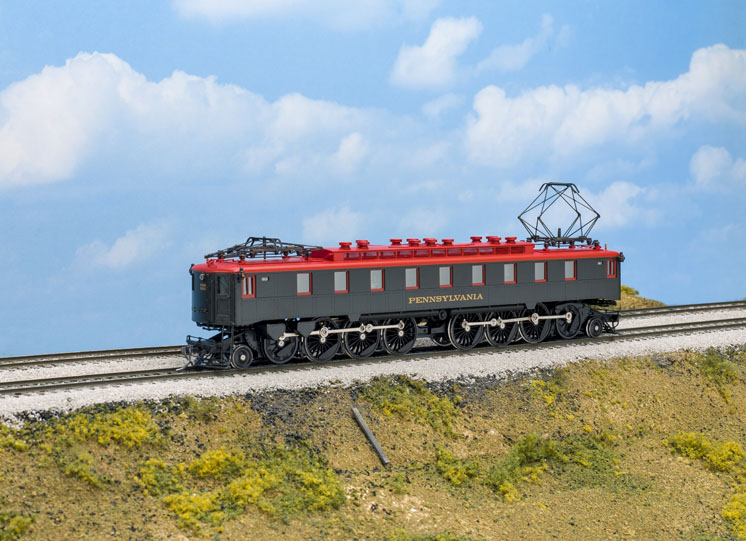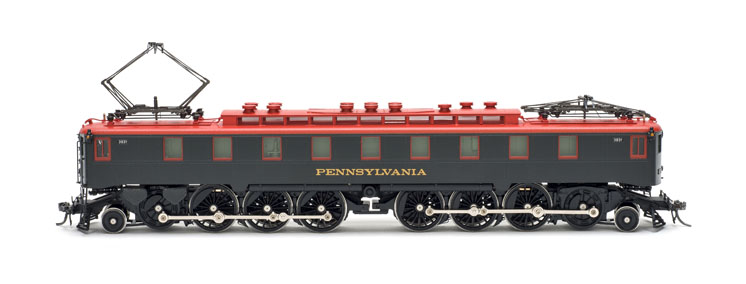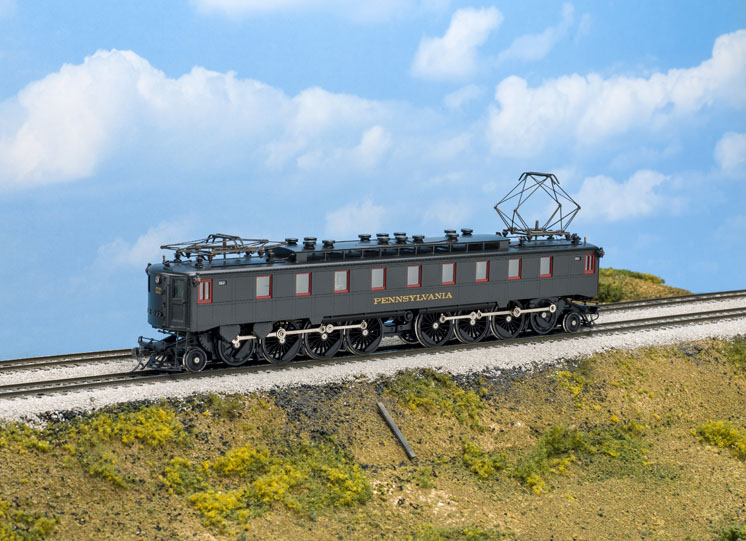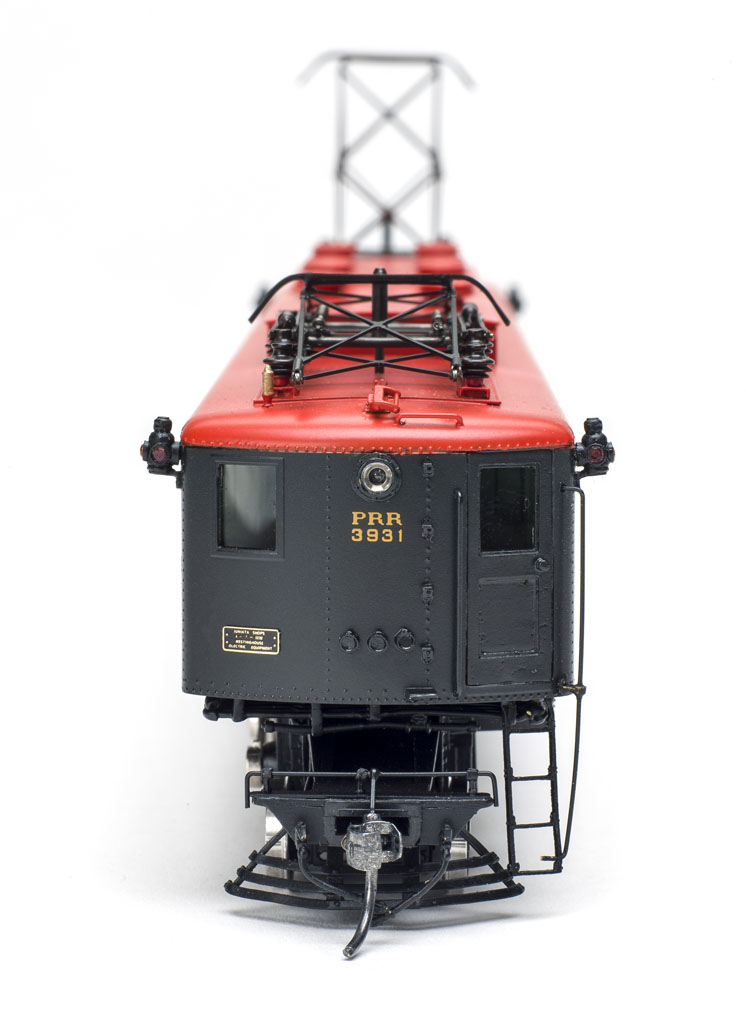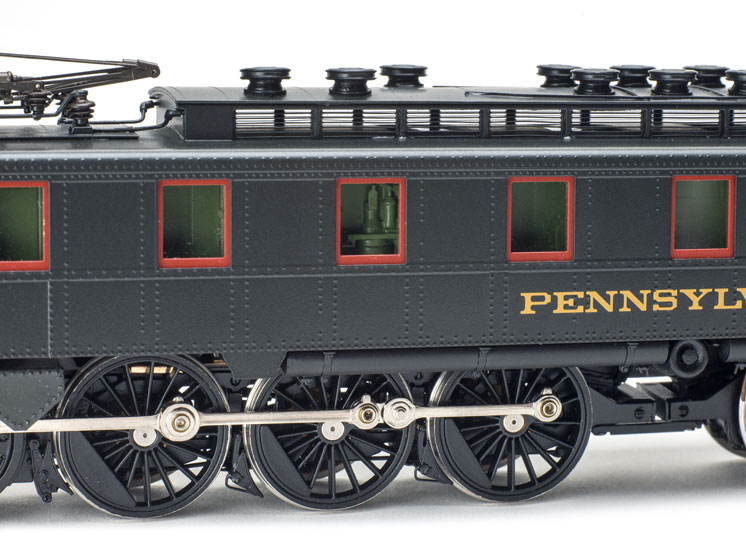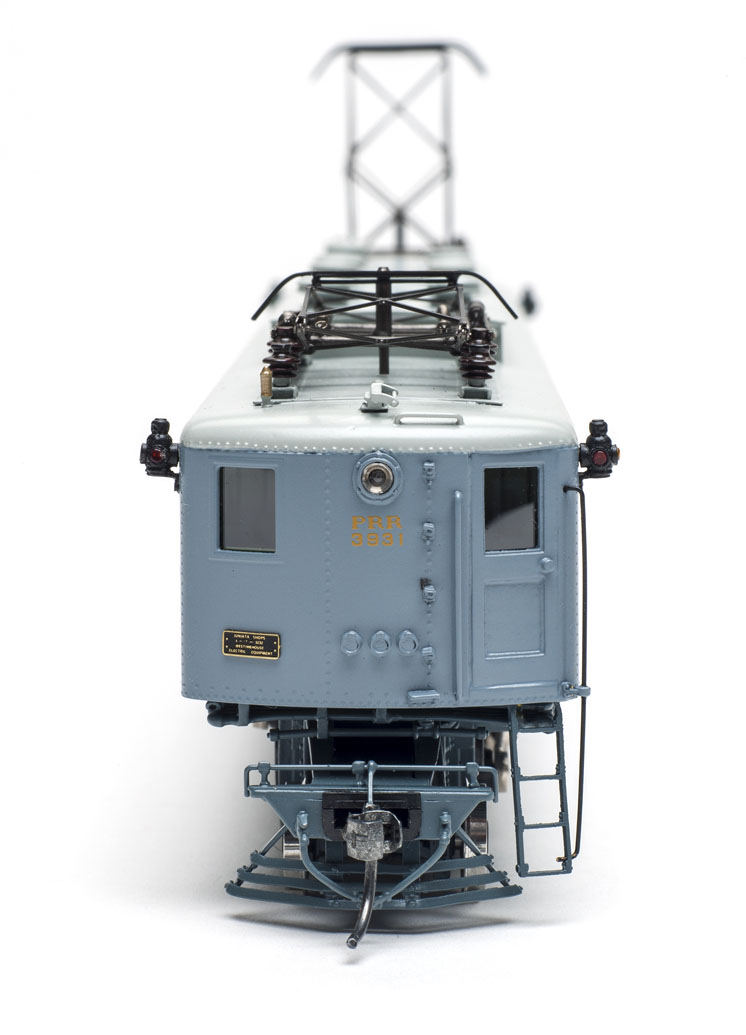The massive class FF1 was the Pennsylvania RR’s first heavy-duty, alternating current (AC) mainline locomotive. Eisenbahn Canada has released a museum-quality HO scale brass model of this pioneering electric. The model is exquisitely detailed with more than 1,250 parts and is available in three prototypical paint schemes.
The prototype. In 1917 the Pennsylvania RR needed a freight locomotive capable of hauling tonnage along its planned electrified route over the Allegheny Mountains. To answer this call, the Pennsy’s own Juniata Shop built a single experimental locomotive, class FF1 no. 3931. The locomotive was 76’-6” long and weighed 516,000 pounds. The FF1 quickly earned the nickname “Big Liz.”
A large rotary converter housed in the locomotive body converted the single-phase overheard AC power to the three-phase power used by four traction motors.
The FF1 had two continuous speed settings, 10.3 and 20.6 mph, which were adequate speeds for heavy drag freight trains. On a downgrade, the locomotive’s traction motors supplied regenerative braking to help slow the train.
The class FF1 had a 2-C+C-2 wheel arrangement that was essentially the same as two class F 2-6-0 Mogul steam locomotives placed back to back. Each of the three-axle power trucks had two traction motors, which were connected to a large sprung gear at the end of a jackshaft. Although this large gear looks like another driver it doesn’t actually touch the rails. Side rods transfer power from the jackshaft to the three driver axles.
To test its performance, Pennsy assigned Big Liz to helper service along the ascending 1 percent grade between Philadelphia and Paoli, Pa. Unfortunately the freight cars of the day were no match for the FF1’s brute power. After pulling out too many couplers in drag service, Big Liz was assigned to pusher duty. In this service, the FF1 would derail cars in the middle of the train. Some wood-bodied freight cars would be splintered to pieces.
The Pennsy’s planned westward expansion of its electrified lines never happened. By the 1930s Big Liz was in storage at Paoli and in 1940 the locomotive succumbed to the scrapper’s torch.
The model. The dimensions of the model match prototype drawings in the Locomotive Dictionary and Cyclopedia, Fifth Edition (Simmons-Boardman, 1919). The brass and die-cast metal model features well-defined rivet seams. Metal handrails, ladders, and other separate parts are properly placed according to prototype photos. The underframe is also detailed, including separate air tanks and piping.
The metal pantographs are especially well done. The sprung parts easily lock in the closed position or unlock to rise to the open position.
All windows have clear glazing. Both cabs have illuminated interiors, and there’s some equipment room detail visible through the side windows.
The model is available in three paint schemes, representing Big Liz throughout her career. The liveries include a gray scheme that the locomotive wore as it left the Juniata erecting floor in 1917, a Dark Green Locomotive Enamel or “Brunswick Green” scheme that it wore for most of its career, and the locomotive’s final livery from the 1930s that included a Tuscan roof. All the paint is smoothly applied with sharp color separation. All the lettering is crisply printed using the correct fonts and colors.
The Juniata Shops/Westinghouse Electrical Equipment builder’s plate is separately applied and matches the prototype, including the correct builder’s number of 3232.
A powerful mechanism. The model’s two Escap can motors provide an extremely smooth and quiet mechanism. On our direct-current (DC) test track, the models crawled at 1 scale mph with only 1V applied to the rails. At 12V the model achieved a top speed of 35 scale mph. All the metal wheels are in gauge and the siderods operated smoothly without any binding.
The HO FF1 features incandescent bulbs to illuminate the headlights, number boards, and markers. The headlights operate according to direction. The markers illuminate with red, amber, and green aspects.
The model includes metal operating knuckle couplers mounted at the correct height per National Model Railroad Association standards. During force meter tests, the HO FF1 produced 3.2 ounces of drawbar pull, which is equivalent to 45 HO scale freight cars on straight and level track.
An accurate model of an important, experimental electric, the Eisenbahn Canada HO scale FF1 is a stunning showpiece.
Manufacturer
Eisenbahn Canada
PO Box 88088
Lansdowne PO
Richmond, BC V6X 2X0 Canada
www.eisenbahncanada.com
Email: sales@eisenbahncanada.com
Price: $2,250
Paint schemes/Eras: Photo gray (as delivered, 1917), Brunswick Green (circa. 1918 to 1930), Brunswick Green/Tuscan (circa. 1930 to 1940)
Features
• 1,250 parts on each model
• Directional headlights and marker lights
• Factory painted
• Full underframe details
• Limited worldwide production run: 80 pieces total (10 Gray, 30 Green, 40 Green/Tuscan)
• Painted and detailed cab and equipment room interiors
• Two Swiss-made Escap ball-bearing can motors
• Weight: 1 pound, 5.4 ounces





